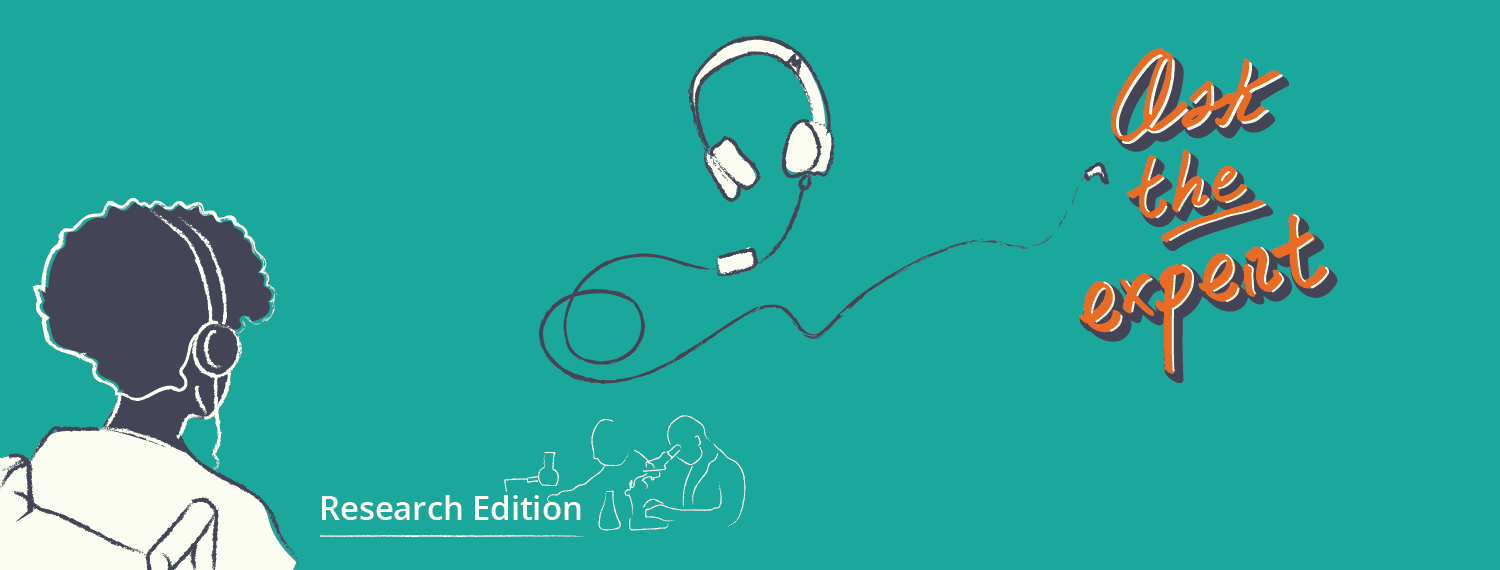Operant Conditioning Rehabilitation Studies
September 6, 2024
In this episode titled, “Operant Conditioning Rehabilitation Studies,” part of the “Ask the Expert: Research Edition” series, Krissy Dilger of SRNA was joined by Dr. Aiko Thompson. Dr. Thompson explained the fundamental principles of operant conditioning and its application in enhancing motor function and sensory pathways in individuals with spinal cord damage due to neuroimmune disorders [00:01:02]. They delved into specific trials aimed at improving spasticity, foot drop, and neuropathic pain, highlighting current studies and ongoing trials [00:02:28]. Dr. Thompson shared details on how eligible participants can take part in these studies and the promising potential outcomes [00:13:39].
Transcript
[00:00:02] Krissy Dilger: Hello and welcome to the SRNA “Ask the Expert” podcast series, “Research Edition.” This episode is titled, “Operant Conditioning Rehabilitation Studies.” My name is Krissy Dilger, and I moderated this episode. SRNA is a nonprofit focused on support, education, and research of rare neuroimmune disorders. You can learn more about us on our website at wearesrna.org.
[00:00:32] “Ask the Expert” is sponsored in part by Amgen; Alexion, AstraZeneca Rare Disease; and UCB. For this episode, we are pleased to be joined by Dr. Aiko Thompson. Dr. Thompson is a neuroscientist and an associate professor in the College of Health Professions at the Medical University of South Carolina. You can view her full bio in the podcast description.
[00:00:57] Welcome and thank you for joining me today.
[00:01:01] Dr. Aiko Thompson: Thank you.
[00:01:02] Krissy Dilger: To start us off, can you provide a brief explanation of what operant conditioning is?
[00:01:10] Dr. Aiko Thompson: Sure. Operant conditioning is a very well-known powerful method to induce behavior learning. Through operant conditioning, modification of a behavior can be made based on the consequence of that behavior. So, simply when the consequence of a behavior is positive its occurrence increases. And when the consequence of a behavior is negative, its occurrence decreases.
[00:01:41] What makes this operant conditioning method so powerful and unique is that it can be applied to a simple and usually involuntary behavior like a reflex behavior, or a stimulus triggered muscle response such as motor evoked potentials to non-invasive brain stimulation. So, we can up-train or up-regulate the neural pathway that produces that targeted muscle response by dividing a large response or we can down-train or down-regulate the pathway by dividing a small response.
[00:02:24] Krissy Dilger: Can you tell us how these operant conditioning trials being conducted by you and your team came to be? What is the background of how operant conditioning became considered a potential rehabilitation strategy?
[00:02:46] Dr. Aiko Thompson: Sure, like I said earlier, the operant conditioning is a method to induce the behavioral learning and it’s been around for a long time. This is not something my group invented, for sure. Operant conditioning of a muscle response, which is the basis of our current operant condition trials, also has a long, more than 40 years of history in basic science, basic physiology studies in animals with mostly no injuries.
[00:03:19] Then after more than 25 years of animal research that showed that reflex operant conditioning can change the activity of a targeted neural pathway semipermanently, round 2005, we thought that we might be able to use this approach to change the key neural pathway that involves impaired movement control to improve motor functions in people with spinal cord injury. So, since then we’ve been testing this approach to see if it can help to improve sensory and motor functions in people with spinal cord damage, stroke and multiple sclerosis.
[00:04:07] Krissy Dilger: What is the broader research question that these studies are attempting to answer?
[00:04:16] Dr. Aiko Thompson: In a very big picture we are trying to see if and then how well we can guide the ability of human nervous system to change its own neural pathways and their functions towards restoring useful sensory and motor functions in people after spinal cord damage and other nervous system disorders. In cases of spinal cord diseases and injuries oftentimes there are some connections remaining between the brain and the spinal cord, but they may not be functioning well.
[00:04:53] And as a result, the person could be suffering from different extents of sensory and movement impairment. So, if we can make those remaining pathways function better or more correctly in our case, if the person can learn to train to make those pathways function better, then the person should be able to achieve better function recovery. And that’s the kind of things we’re trying to do.
[00:05:23] Krissy Dilger: Awesome, and I think a lot of members of our community would be interested in these studies. So, what kind of training studies or clinical trials are you currently running?
[00:05:39] Dr. Aiko Thompson: I’ll give you three examples. The first example is operant down-conditioning of an exaggerated spinal reflex in people with spasticity due to spinal cord damage. Normally the spinal stretch reflex or its electrical analogs called H-reflex is modulated during and between different movements. So, that the reflex functions appropriately in different movements.
[00:06:08] But after the injury, the reflex moderation could be messed up regardless of the movement of intention and it could remain too strong, not too moderated and therefore could become detrimental rather than being helpful. So, to tame this reflex, we would apply operant down-conditioning to the hyperactive reflex in the calf muscle of people with spasticity due to chronic spinal cord damage.
[00:06:39] In the earlier studies, over 30 conditioning training sessions, the reflex became smaller in those spastic individuals and their walking speed increased significantly. The patient also noticed decrease in spasticity in their daily lives. And with this approach, we are also currently running a clinical trial to study more individuals with spinal cord damage.
[00:07:07] The second approach is the one that uses non-invasive brain stimulation called transcranial magnetic stimulation or TMS to target changes in the brain to spinal cord pathway. After a spinal cord damages the brain to spinal cord connection, the muscle response to brain stimulation often becomes small and this reflects the reduced brain to spinal cord connection in these people.
[00:07:39] And in people with foot drop, smaller dorsiflexor muscle response to brain stimulation are very common and very well linked to weak dorsiflexion at the ankle. So, to strengthen the brain-spinal cord pathway for the ankle muscles, we apply operant up-conditioning to the dorsiflexor response for reducing foot drop in people with chronic incomplete spinal cord damage.
[00:08:09] Our initial results are very promising. It improved walking and people’s foot drop got less. And based on that, we are currently running another clinical trial on this approach. The third one is the most experimental aiming to address the neuropathic pain after spinal cord damage. In people with chronic injury, reflexes to non-painful stimuli are often weakened, but present. At the same time, the pain processing is often exaggerated and heightened. So, that’s why they have pain.
[00:08:45] So, in these people, the balance of pain and non-pain information processing in the spinal cord could be really messed up. So, to restore their balance and to boost the non-pain processing to counter the often-heightened pain processing, we are attempting to up-regulate a non-painful skin sensation reflex in people with neuropathic pain due to spinal cord damage.
[00:09:14] The first clinical trial of this kind is currently ongoing. And if this works as we predict, we can have a new noninvasive non-pharmacological means to reduce chronic neuropathic pain in this population. So, we are very excited about this new trial.
[00:09:34] Krissy Dilger: That’s very exciting and those all sound like very interesting studies for sure. So, how are the studies set up?
[00:09:46] Dr. Aiko Thompson: For all of these training studies we place a bunch of electrodes over the skin surface to monitor the muscle activity. For the reflex training studies, we also place some more electrodes for stimulating a nerve to elicit the muscle response.
[00:10:06] For the brain stimulation training studies, we place a stimulator over the head to elicit a muscle response. Our typical training session takes about an hour to an hour and a half. And the people are asked to come in for training and then some assessment for 40 to 50 sessions over a few months for each training study.
[00:10:31] Krissy Dilger: Who can participate in these studies?
[00:10:37] Dr. Aiko Thompson: A person with spasticity, foot drop, arm and hand weakness, or neuropathic pain due to chronic spinal cord lesions will likely be eligible to participate in at least one of our training studies, maybe more. Potential candidate has to be generally healthy and then not going through medication changes at the time of study participation.
[00:11:06] Krissy Dilger: And can participants continue on other rehabilitative therapies while in this study or will they be required to stop any other rehabilitation?
[00:11:19] Dr. Aiko Thompson: Thanks for asking. This is a really good question. Participants can continue their ongoing therapies while they are in the study. If anything, we just don’t want people to change their therapy schedule or medication while they are in the study.
[00:11:36] Krissy Dilger: So, the constant is more what you’re looking at?
[00:11:40] Dr. Aiko Thompson: Yes.
[00:11:43] Krissy Dilger: These all sound very promising and exciting studies. What is the status of the studies thus far? Have there been any results you can report or is it too soon?
[00:11:57] Dr. Aiko Thompson: Our earlier study results have been published in different journals and already available in public. The list of those general papers is available at our website. It’s called operantconditioning.org. You can also see the former study participants testimonial and before and after comparison videos on the website as well.
[00:12:22] Krissy Dilger: Great. And when are the studies expected to finish?
[00:12:28] Dr. Aiko Thompson: So, all of these studies are currently funded by the federal government’s funding mechanism. So, those will be ending as of now in 2025 or 2026, but we are hoping to continue our studies as new trials of larger scales hopefully beyond 2025 and ’26.
[00:12:53] Krissy Dilger: So, if successful who will be potentially eligible for these therapies in the future?
[00:13:02] Dr. Aiko Thompson: In the immediate sense, people with spasticity, foot drop and hand weaknesses or neuropathic pain due to chronic spinal cord lesions will be eligible. But in the long run, the approach will likely become available to a wide pool of individuals with different neuro muscular impairments due to different diagnosis.
[00:13:28] Krissy Dilger: Well, this has been such amazing information and thank you so much for sharing with our community about these studies. I’m sure listeners will want to know how can someone participate in these studies?
[00:13:44] Dr. Aiko Thompson: Great. Basically, by contacting us first would be great. You can email us at [email protected] or call us at (843) 792-6313. You can find out our ongoing studies and publications at our website operantconditioning.org anytime.
[00:14:12] Krissy Dilger: Awesome. Well, thank you so much and I look forward to hearing more about how these studies are going.
[00:14:20] Dr. Aiko Thompson: Thank you so much for having me. Thanks for the opportunity.
[00:14:28] Announcer: Thank you to our “Ask the Expert” sponsors, Amgen; Alexion, AstraZeneca Rare Disease; and UCB. Amgen is focused on the discovery, development and commercialization of medicines that address critical needs for people impacted by rare, autoimmune, and severe inflammatory diseases. They apply scientific expertise and courage to bring clinically meaningful therapies to patients. Amgen believes science and compassion must work together to transform lives.
[00:14:59] Alexion, AstraZeneca Rare Disease is a global biopharmaceutical company focused on serving patients with severe and rare disorders through the innovation, development, and commercialization of life transforming therapeutic products. Their goal is to deliver medical breakthroughs where none currently exist, and they are committed to ensuring that patient perspective and community engagement are always at the forefront of their work.
[00:15:26] UCB innovates and delivers solutions that make real improvements for people living with severe diseases. They partner with and listen to patients, caregivers, and stakeholders across the health care system to identify promising innovations that create valuable health solutions.
LISTEN & SUBSCRIBE
TO PODCAST
DOWNLOAD MP3
DOWNLOAD TRANSCRIPT












